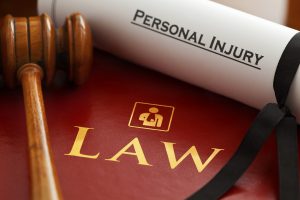Paige Gasper, a 21-year-old student at Sonoma State University in California, has filed the first of what is likely to be many lawsuits relating to the mass shooting in Las Vegas on October 1. The shooting, carried out by Stephen Paddock, left 58 people dead and 500 more wounded in the worst mass shooting event in United States History. The lawsuit, which was filed in the Clark County District Court, named several defendants, including Mandalay Bay and its owner, MGM Resorts; Live Nation, the concert promoter; and the maker of “bump stocks,” the device Paddock used to make his guns mimic automatic weapons. Since Gasper’s lawsuit, there have been at least two more filings in the same court over the shooting: a class-action claim by the Brady Center to Prevent Gun Violence against the manufacturer and sellers of bump stocks in Nevada, and a petition asking the court to take control of Paddock’s estate.
Gasper was with a group of friends the night of the shooting when she was shot in her right underarm. After she was trampled by others trying to escape, another concert attendee took her to a truck that raced her and a group of other people who had been shot to a hospital. She was the only passenger who survived. After being treated for fractured ribs and a lacerated liver in an intensive care unit, Gasper returned to her family in California, where she is still recovering. Her lawsuit claims that MGM Resorts “breached their duty of reasonable care” and failed to keep the hotel “in a reasonably safe condition” because it did not monitor people coming into the hotel and did not respond quickly enough to Jesus Campos, a security officer whom Paddock shot and wounded about six minutes before he began firing on the concert crowd. It also claims that MGM, which also owns the concert venue, and Live Nation did not design, build, or mark adequate emergency exits and failed to “properly train and supervise employees in an appropriate plan of action in case of an emergency.”
Although the victims’ need and the public’s demand for justice, in this case, are high, the plaintiffs in these types of cases face an unfortunately high bar to recovery. Lawsuits after mass shootings have largely struggled, due to a federal law that shields gun manufacturers and sellers from civil claims brought by victims of gun violence. Congress passed the law, known as the Protection of Lawful Commerce in Arms Act, after significant lobbying from the National Rifle Association in 2005. While liability against MGM and Live Nation will be fairly easy to establish, a decision placing liability on gun manufacturers would be “unprecedented,” according to Timothy D. Lytton, a law professor at Georgia State University. “No plaintiff has ever obtained an unreversed jury verdict in a lawsuit against a gun manufacturer for an injury arising out of the criminal use of a weapon,” Lytton said. “The argument,” he added, referring to the justification of the 2005 law, “is that the industry’s not responsible for gun violence — criminals are responsible.”
 If you get injured in an accident, there are multiple issues to consider. First, you need to figure out who is at fault. Then you need to determine how much compensation you are entitled to receive. Finally, you need to navigate the process for actually getting your claim paid. In most accident cases, someone’s insurance company pays the claim – the at-fault person doesn’t often pay for your injuries out of his or her pocket.
If you get injured in an accident, there are multiple issues to consider. First, you need to figure out who is at fault. Then you need to determine how much compensation you are entitled to receive. Finally, you need to navigate the process for actually getting your claim paid. In most accident cases, someone’s insurance company pays the claim – the at-fault person doesn’t often pay for your injuries out of his or her pocket.  Georgia Injury Lawyers Blog
Georgia Injury Lawyers Blog


 One of the things we try to do here at Slappey & Sadd is remember what it’s like to be in the client’s shoes. It’s a good way to remember that things that may seem routine or unremarkable are actually unknown territory and fairly intimidating for the people we represent. As a result, we thought we’d use today’s post to walk you through the process in the event that you’ve been seriously injured.
One of the things we try to do here at Slappey & Sadd is remember what it’s like to be in the client’s shoes. It’s a good way to remember that things that may seem routine or unremarkable are actually unknown territory and fairly intimidating for the people we represent. As a result, we thought we’d use today’s post to walk you through the process in the event that you’ve been seriously injured.